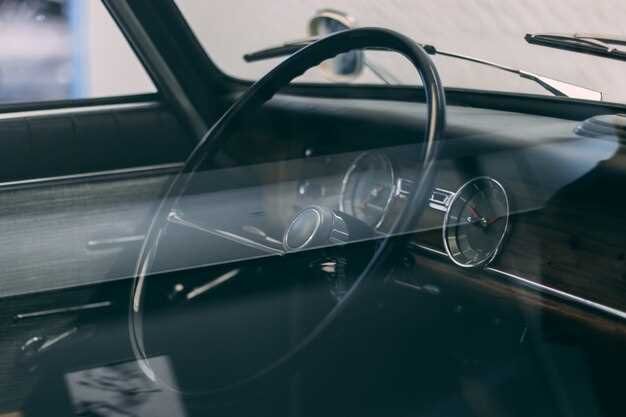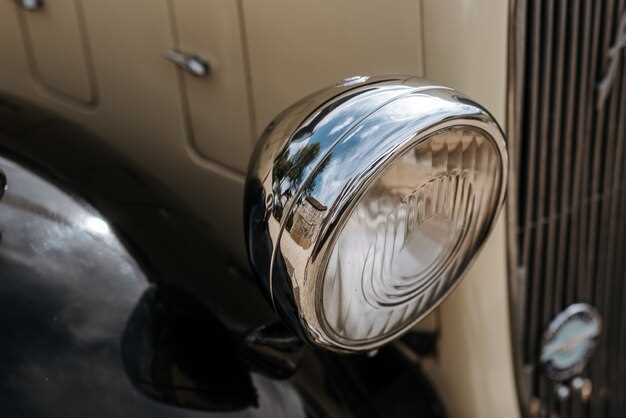
Driving classic cars evokes a sense of nostalgia and a connection to automotive history. However, owning and operating these vintage vehicles comes with unique challenges, particularly concerning modern safety regulations. As enthusiasts and collectors strive to preserve the authenticity of their cars, understanding the legal frameworks surrounding the use of vehicles without modern safety features becomes essential.
The absence of contemporary safety measures, such as airbags, anti-lock braking systems, and electronic stability control, raises questions about safety compliance and potential liabilities when driving classic cars. Regulations may vary significantly by region, making it imperative for owners to familiarize themselves with the local laws. In some areas, classic cars may be subject to different standards than modern vehicles, allowing for a more lenient approach to safety requirements.
Moreover, insurance considerations play a vital role in the legality of driving classic cars. Many insurance companies offer tailored policies for vintage vehicles, which often include stipulations about driving habits, mileage limits, and storage conditions. This article will guide you through the legal landscape of operating classic cars without modern safety features, highlighting key considerations and best practices that enthusiasts should know to enjoy their vintage rides responsibly and legally.
Understanding the Legal Requirements for Classic Car Registration

Registering a classic car involves navigating a complex landscape of legal requirements that vary by jurisdiction. It is essential to understand these regulations to ensure compliance and to enjoy the benefits associated with classic cars, such as lower registration fees and insurance rates.
The first step in the registration process is determining the classic status of the vehicle. In many regions, a car must meet certain age criteria–commonly at least 20 to 25 years old–along with specifications regarding its historical significance or originality. Some areas may require certification from a recognized classic automobile club to validate its status.
Next, owners must gather the necessary documentation, which typically includes proof of ownership, such as a bill of sale or title, and identification. Documentation may also require a Vehicle Identification Number (VIN) verification to confirm the car’s specifications and history.
Many states have specific forms for classic car registration, which may differ from standard vehicle registration applications. It is crucial to complete these forms accurately and submit them along with any required fees. Some jurisdictions may offer a special classic car registration category, which can provide benefits like reduced emissions testing or exemption from certain safety and emissions regulations.
Insurance is another important factor in classic car registration. Owners often need to secure a policy that covers the vehicle’s unique value and potential risks. Some insurance providers specialize in classic cars and are familiar with the specific coverage requirements that often accompany these vehicles.
Lastly, it is vital for classic car owners to stay informed about local laws and regulations, as these can change over time. Joining classic car clubs or forums can provide valuable resources and insights into the registration process and help owners connect with others who share their interests.
Insurance Considerations for Classic Cars Lacking Modern Safety Features
When insuring classic cars that do not include modern safety features, it’s essential to understand how this impacts your coverage options and premiums. Classic cars often fall under a different category than standard vehicles, which can lead to unique challenges and considerations in the insurance process.
Firstly, insurers typically evaluate classic cars based on their value, usage, and historical significance rather than standard safety ratings. This means that providing a detailed appraisal of your vehicle is crucial. An accurate assessment can help establish its market value, ensuring you receive appropriate coverage in case of theft, damage, or total loss.
Many insurance providers offer specialty coverage for classic cars, which can be more suitable than standard auto insurance policies. These policies often consider the limited use of the vehicle, which might result in lower premiums. However, it is vital to document the car’s usage and storage conditions to qualify for these policies. Insurers generally require owners to adhere to specific mileage limits and conditions, such as storing the car in a garage.
Another significant factor to consider is liability coverage. Classic cars lacking modern safety features may lack essential technologies such as airbags, anti-lock brakes, and electronic stability control, which could increase the likelihood of injuries in an accident. Therefore, ensuring you have adequate liability coverage is crucial to protect against potential costs associated with accidents, especially considering that injuries could be more severe.
Furthermore, it’s important to review the deductible associated with your insurance policy. Given the potential for unique repair costs or parts that are difficult to source, a lower deductible may be more beneficial for classic car owners. This helps mitigate financial risks associated with repairs after an incident.
Lastly, it is advisable to consult with an insurance broker who specializes in classic vehicles. They can guide you in selecting the best coverage options that align with your car’s unique characteristics and your own needs, including vintage racing or show participation, which might require additional coverages.
Adapting Driving Habits for Safety in Older Vehicles

When driving classic cars, it is essential to adapt your driving habits to ensure safety, given the lack of modern safety features. First, maintain a safe following distance. Older vehicles often have less effective brakes, so extending the space between your car and the vehicle ahead can provide you with more time to react.
Second, practice smooth acceleration and deceleration. Classic cars do not handle abrupt movements well, which can lead to loss of control. Gradual inputs on the accelerator and brake pedals will help maintain stability.
Third, be aware of your surroundings. Modern distractions such as smartphones can divert attention from the road, but in classic cars, the limited visibility can be more pronounced. Keep your head on a swivel, checking mirrors and blind spots frequently.
Fourth, anticipate road conditions. Older vehicles may lack advanced traction control and anti-lock braking systems. Adjust your speed according to the road surface, especially in wet or uneven conditions, to avoid skidding.
Fifth, familiarize yourself with the vehicle’s limitations. Classic cars may have less power, different steering responses, and longer stopping distances. Understanding how your vehicle behaves in various situations will help you make safer decisions on the road.
Finally, ensure regular maintenance checks. Old cars are more prone to mechanical issues. Regularly inspect brakes, tires, and steering components to ensure that your vehicle performs reliably and safely.
